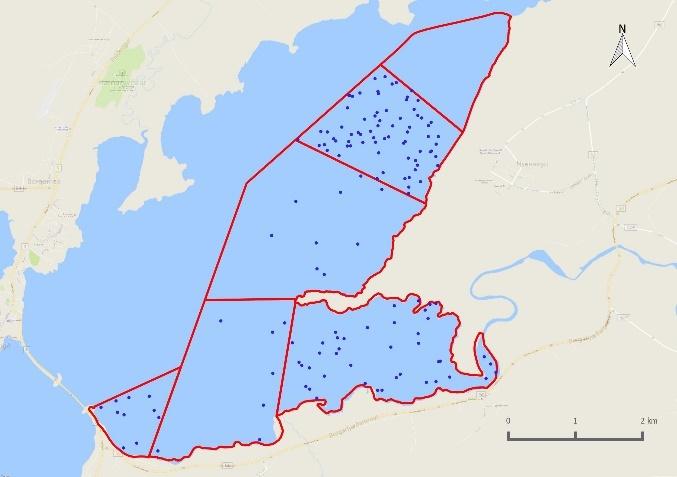
2 minute read
Red-throated Diver
Red-throated Diver
Gavia stellata Lómur
Red-throated Divers were recorded sporadically throughout the majority of the survey period. Highest numbers (14 birds) occurred on 29th May, and the species was recorded on most surveys between mid-May and mid-August. Up to six birds were recorded on Lake Vatnshamravatn throughout April, with high counts of 14 and 10 birds recorded there on 24th and 27th April respectively. Two nesting territories were observed on Lake Vatnshamravatn on 28th May. Both pairs successfully hatched chicks, and broods of two and one unfledged chicks were observed on 9th July. There were intermittent records in the estuarine survey area during August and September. The last record was of a single bird on 25th September. While Red-throated Divers were recorded in each of the six subsites during low tide and rising tide surveys, greatest numbers were routinely found in the three southernmost subsites, Flæðhöfðasker (Est 6), Grjóteyrarklakkur (Est 1) and Kistufjörđur (Est 2).
Number of individuals 16 14 12 10 8 6 4 2 0 Low-tide Rising-tide

10 11 12 13 14 15 16 17 18 19 20 21 22 23 24 25 26 27 28 29 30 31 32 33 34 35 36 37 38 39 40 41 42 43 Mar Apr May Jun Jul Aug Sep Oct Week number and month
Figure 3-54. Number of Gavia stellata recorded during weekly low tide and rising tide estuarine surveys in the Andakíll Ramsar site between 12th March and 25th October 2017.
Figure 3-55. Relative abundance of Gavia stellata during weekly (a) low tide and (b) rising tide estuarine surveys in the Andakíll Ramsar site between 12th March and 25th October 2017. Dots are randomly positioned within each subsite. While each dot refers to a single bird, it refers to the bird’s presence in that subsite only, and not the bird’s actual location.
(a) Low tide (b) Rising tide


(a) Low tide
(b) Rising tide

Figure 3-56. Proportion of foraging and roosting Gavia stellata during weekly (a) low tide and (b) rising tide estuarine surveys in six subsites in the Andakíll Ramsar site between 12th March and 25th October 2017.











